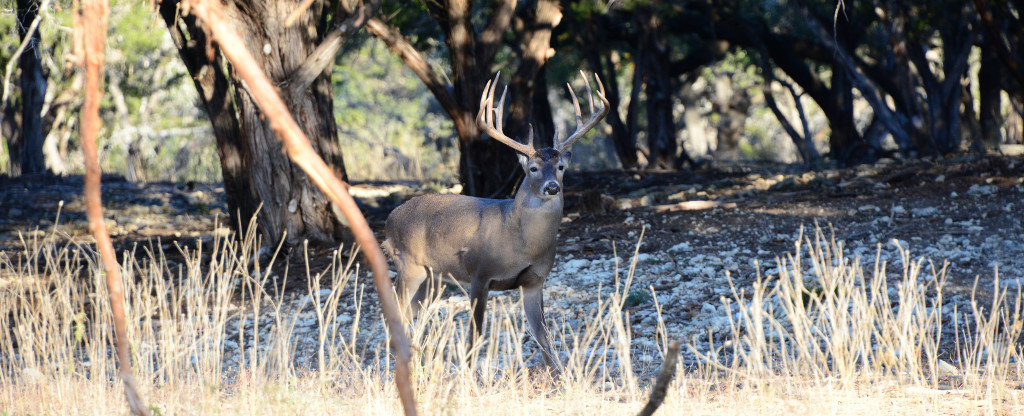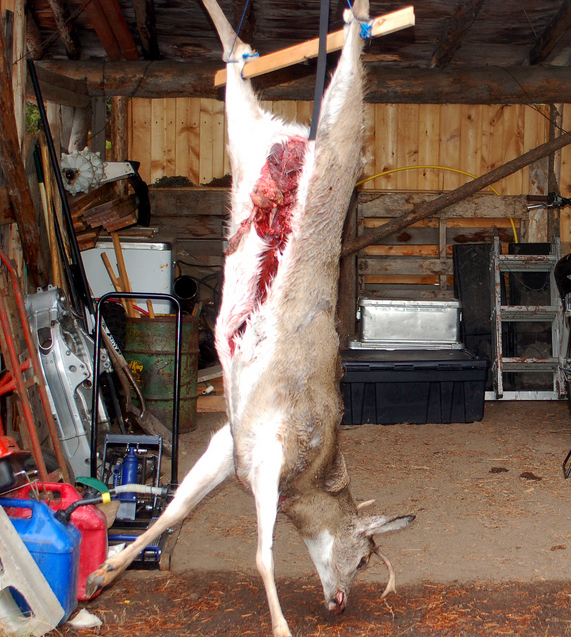Gun hunting has fallen out of vogue in recent years. Most of the big hunting magazines publish articles geared up for bow hunters. As more bow hunters are hitting the woods with a stick and string, many hunters still enjoy the traditions of still hunting big woods with smoke poles and light carbines perfect for deer.
The renascence of bullet technology has left us with a whole shelf of bullets for specific purposes including deer hunting. Several ammunition houses load ammo specifically for deer. The best .308 bullet for deer hunting will be engineered for quick expansion and maximum trauma.
Bullet Construction
There are two schools of thought when debating terminal bullet performance. The goal of the bullet is to put a hole in the animal. First and foremost, everyone agrees that the hole has to be in the right spot. Shot placement on the animal is just as important as bullet construction. If you put a .22lr in the right spot it’ll be more lethal than a .50BMG in the wrong spot.
This is where the two schools of thought diverge and the arguing starts. There is debate among hunters if having a bullet make a double pass through is optimal for putting deer down quickly. With bow hunters there’s no debate; having a double pass through means more blood out quickly.
The more blood that’s lost the better. This is because it lowers blood pressure and leaves a trail for the hunter to follow. I personally think this is optimal. Some hunters believe that the energy carried by the bullet will do enough damage to the lung and heart tissue and the animal will bleed out internally.
If the animal bleeds out internally you won’t have a good trail to follow. Entry holes rarely bleed enough for a good trail. They’re small and precise, while a big ragged hole from an expanded .308 will leak fluid like a stuck pig.
A happy medium has to reached between bullet expansion and weight retention because if a bullet expands and fragments on impact there won’t be any penetration. This is why varmint bullets have no place in the whitetail world. You need a bullet that has high weight retention for reliable penetration.
If the bullet is too tough it won’t open up and you’ll experience delayed killing and a long tracking job. This is especially true with deer that bed down quickly. If a deer makes it into their bed with little or no blood trail you may never find it. This rules out FMJ and solid ammunition which is normally banned for deer anyway.
Bullet Weight
The best .308 bullet for whitetail deer is in the 150gr to 165gr range. This gives enough weight for ample penetration but keeps the velocity high enough to keep trajectories flat and impact energy high. A 150gr bullet from a .308 is the right medicine for the toughest whitetail deer you’ll ever run into.
Lighter weight monolithic bullets are acceptable because they retain all their weight. 125gr Barnes TSX or Hornady GMX bullets are a good example. Honestly these bullets are over kill for deer unless you’re hunting in a lead free zone. They’re much too tough and you’ll get a delayed kill and low expansion.
Bullet Recommendations
History has taught us that the best bullet for thin skinned game like whitetail deer is a bullet that expands and retains at least 60-70% of its weight. This means a .308 caliber bullet will expand up to .50 caliber or larger and leave a shank always that exits.
Most cup and core bullets will work. A cup and core bullet is a traditional bullet where molten lead is poured into a copper jacket. A bonding process is sometimes added and other times a tapered jacket is used to control expansion. Almost any bullet of this type will work.
Factory Loaded Ammo:
Hornady American Whitetail

Hornady loads this new round with their interlock bullets for reliable and emphatic killing of whitetail deer at typical hunting ranges. These are great rounds because they’re cheap but reliable. Bullets for deer just don’t cost a lot. The Hornady interlock bullet is a traditional cup and core bullet with a heavier tapered jacket to control expansion and be absolutely sure there’s a shank that exits.
Nosler Partition

The Nosler partition is the original premium bullet. Designed for elk hunting out west there is a bulk head built into the bullet that keeps the shank from expanding while allowing for quick and violent expansion and fragmenting on the front end. The absolute best of both worlds. The devastating front end and the sure fire penetrating shank will drop any deer you’ll ever see.
Barnes TTSX

The Barnes TTSX is an updated TSX bullet to add a soft plastic tip to increase the ballistic coefficient and flatten the trajectory. The Barnes is an all copper alloy bullet that retains 99% of it’s weight. It’ll pass clean through a deer end to end and stay in one piece. Getting expansion can be tougher so many of the bullets are slightly lighter than others to get extra velocity. If you’re forced to use lead free this is your best bet for deer or anything larger.
Federal Fusion

The Federal fusion line of hunting ammo is a traditional line of cup and core bullets with an added bonding process to keep the weight retention high. These bullets are a great option if you’re on a budget or you have an AR 15. This is my personal choice and in my opinion the best .308 round for deer hunting. There’s an entire line up of these rounds called the MSR line that uses the fusion bullet and are loaded specifically for AR 10’s and AR 15’s.
In Summary
The best .308 bullet for deer hunting is a bullet that will reliably expand and penetrate completely through a deer. The job of the bullet is to push a hole completely through the animal to drain blood. The blood has to leave a trail bold enough to follow through the brush and get your deer and drop the blood pressure quickly enough to keep it from running too far. Most any cup and core bullets will be enough to put a deer down quickly... don’t worry if you put the bullet where it needs to go you’ll come out with meat for the freezer.



